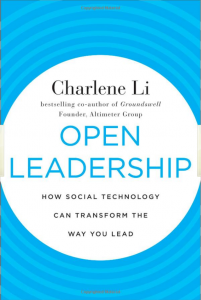Seven Questions to Ask About Your Website
People usually call me for help setting up and optimizing their social marketing programs, but in the early stages of our engagement the conversation almost always takes another turn.
In about two out of three cases, in fact, we wind up focusing first on the client’s website because so many basic issues still need attention. Clients are sometimes frustrated by this. After all, they want to get started with the cool new tools and usher new business in the door. But if the most important source of new business – the website – isn’t doing the job for them, the new tools are a waste of time. After all, why would you want to bring new visitors to a site that does a poor job of telling your story?
Websites are developed by people who work at the company and who are very knowledgeable about the business. It’s natural for them to assume more knowledge on the part of the visitor than the typical visitor actually has. Messages are often focused on selling a solution rather than solving a problem, but people don’t care about your product; they care about what’s troubling them right now. That’s a fine distinction, but it’s critical to conveying an effective message.
A well-crafted message communicates understanding of the visitor’s needs and frames the solution in the context of relieving pain or creating opportunity. Focus on results rather than process. Here are some questions that can help you determine whether your website is hitting the mark:
Is the message clear and succinct? Ask a few people who are familiar with your industry but not with your company to spend exactly one minute on your website. That’s about the amount of time an average visitor will grant you. Then ask them to tell you what your company does, what problems you address and who the target customer is. If they can’t answer those three questions after one minute, then your message isn’t clear enough.
Are you optimized for search? Navigate through your website and look at the page titles at the top of your browser. Do they include the keywords that customers use to find you? Do some of your pages have generic titles such as “About” or “Services?” How about PDF documents? Are the titles and meta-tags clear or do they still have gibberish file names that machines generate? Are your images and videos tagged? These are simple things that mean a lot to search engines.
Does your message communicate understanding of the visitor’s problem? Put yourself in the shoes of a typical prospect visiting your website. Think about the problem that person is trying to solve. Does your message demonstrate that your solution was designed with that problem in mind? Or are you selling aspirin when you should be selling headache relief? Does your choice of words show that you’re committed to easing the visitor’s pain?
Are you using all the available tools? Many business websites are heavy on text, which may have been all that was available when the site was built. But 65% of people are classified as visual learners. If you’re not using all the media you can, you’re under-serving your audience. I’m not talking about stock photography but rather about illustrations that clarify and explain. Today it’s cheap and easy to point a camera at a product manager or engineer and ask the person to explain a product. Voice-annotated screen shows or PowerPoint slidecasts are also inexpensive ways to illustrate complex concepts.
Is it easy to join your list? Every page of your website should have an invitation for visitors to become prospects. These can be in the form of newsletter sign-ups, white paper downloads, requests for more information or invitations to view a webcast. Why would you want to miss any chance to turn an interested passerby into a lead?
Are your pages easy to share? Every page should also have embedded widgets that make it easy for visitors to e-mail, bookmark, tweet or otherwise share your content. In most cases, these are easy to add to a template and there’s no downside to having them.
Do you humanize your company? This is particularly important for b-to-b companies, which establish long-term relationships with their customers. Does your site include faces, biographies and personal messages? What do you do to create personal connections that increase a visitor’s comfort level with the people behind the product? Does your website have personality or does it read like a research paper? If you’re interested in social marketing, start with the social part. Let your people go.
I’m sure I’ve missed some things, so let me know your own thoughts in the comments section. What makes a business website work for you? (Valerie Everett graphic)
B-to-B Social Marketing Innovators
As Eric Schwartzman and I research our forthcoming b-to-b book, Social Marketing to the Business Customer, we’ve been recording many of our interviews with experts. Here’s a sample of new podcasts that have resulted:
 B2B Online Community Management with HR.com founder Debbie McGrath (right);
B2B Online Community Management with HR.com founder Debbie McGrath (right);- Selling Social Media into the Enterprise with Nielsen Online Digital Strategic Services EVP Pete Blackshaw;
- Web Strategy with Altimeter Group’s Jeremiah Owyang;
- Corporate Social Media Policies with SocialMediaGovernance.com founder Chris Boudreaux;
- Trust and Loyalty through B2B Social Networks with Scott Hanson, co-administrator of Dell Tech Center;
- B2B SEO Strategy and Tactics with search guru Lee Odden;
- Getting Buy-In and Resources for Social Media with Brian Solis, author of Putting the Public Back in Public Relations and Engage.
Tip of the Week: Buying Collaboratives
We’ve written before about Woot!, a site that sells overstock and surplus merchandise at amazing savings. Now you can add to that BuyWithMe.com, a regional service that offers big savings on everyday services using an arbitrage model that guarantees the merchant a certain number of responses in return for the discount but changes the terms if enough people don’t apply. You have nothing to lose by checking it out, so please do so and tell us what you think.
Just for Fun: How Dogs Talk
Is a dog really happy when it wags its tail? It depends. Wagging to the right is a sign of positive feelings, but wagging to the left means Spot is feeling blue. This is just one of the fascinating insights I gained from this short article called The Secret Language of Dogs. I’ve owned pups since I was five and never knew that a paw slap is equivalent to a pat on the back or that barking really does have a language of its own. While you’re there, check out Why Dogs Do Strange Things.



 Skydiving looks like fun. And if it wasn’t for pesky things like responsibility and the fact that they can’t guarantee I’d live through it, I would have done it years ago. So I respect people all the more who not only skydive, but do so on a regular basis and
Skydiving looks like fun. And if it wasn’t for pesky things like responsibility and the fact that they can’t guarantee I’d live through it, I would have done it years ago. So I respect people all the more who not only skydive, but do so on a regular basis and 
 Between
Between  I don’t go to the
I don’t go to the 




 Like many people, I was glued to my computer and smart phone much of last Saturday monitoring news of the massive earthquake in Chile and awaiting, with morbid anticipation, the possibility that it could trigger deadly tidal waves in other parts of the world.
Like many people, I was glued to my computer and smart phone much of last Saturday monitoring news of the massive earthquake in Chile and awaiting, with morbid anticipation, the possibility that it could trigger deadly tidal waves in other parts of the world.

 Businesses are spreading their social media wings in a big way, creating lots of new opportunity but also questions about how to manage their suddenly overflowing baskets of online goodies.
Businesses are spreading their social media wings in a big way, creating lots of new opportunity but also questions about how to manage their suddenly overflowing baskets of online goodies.



